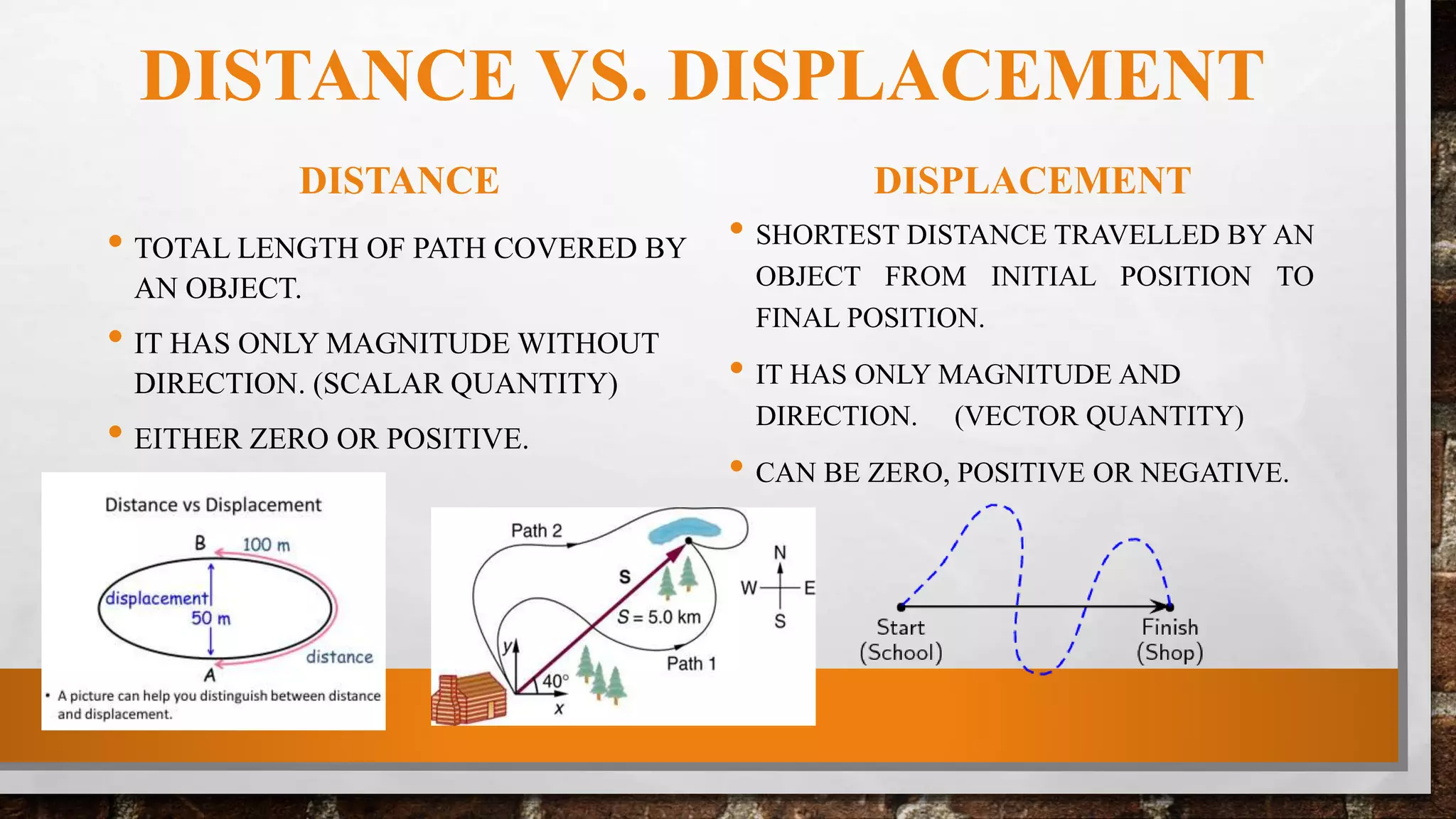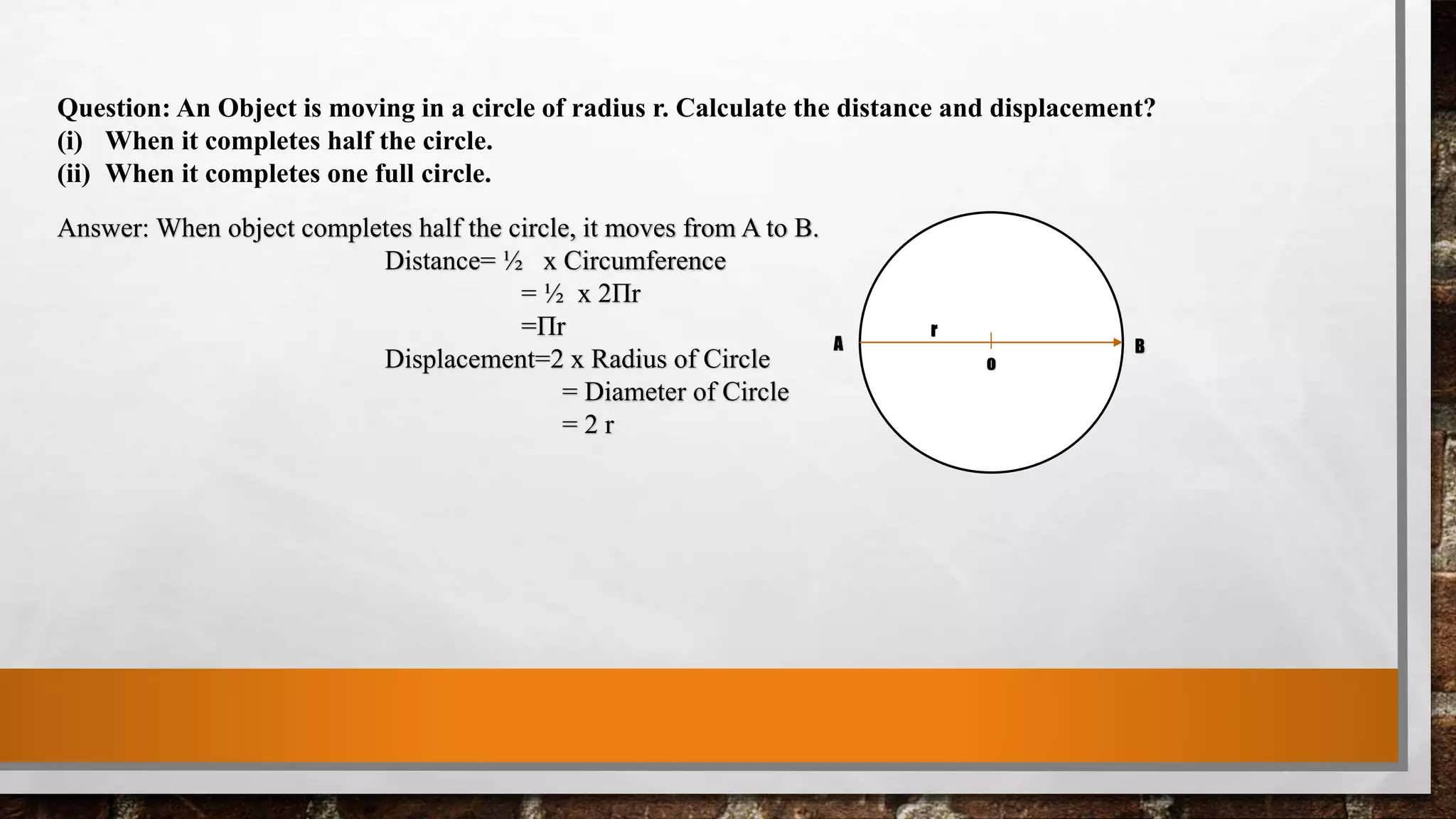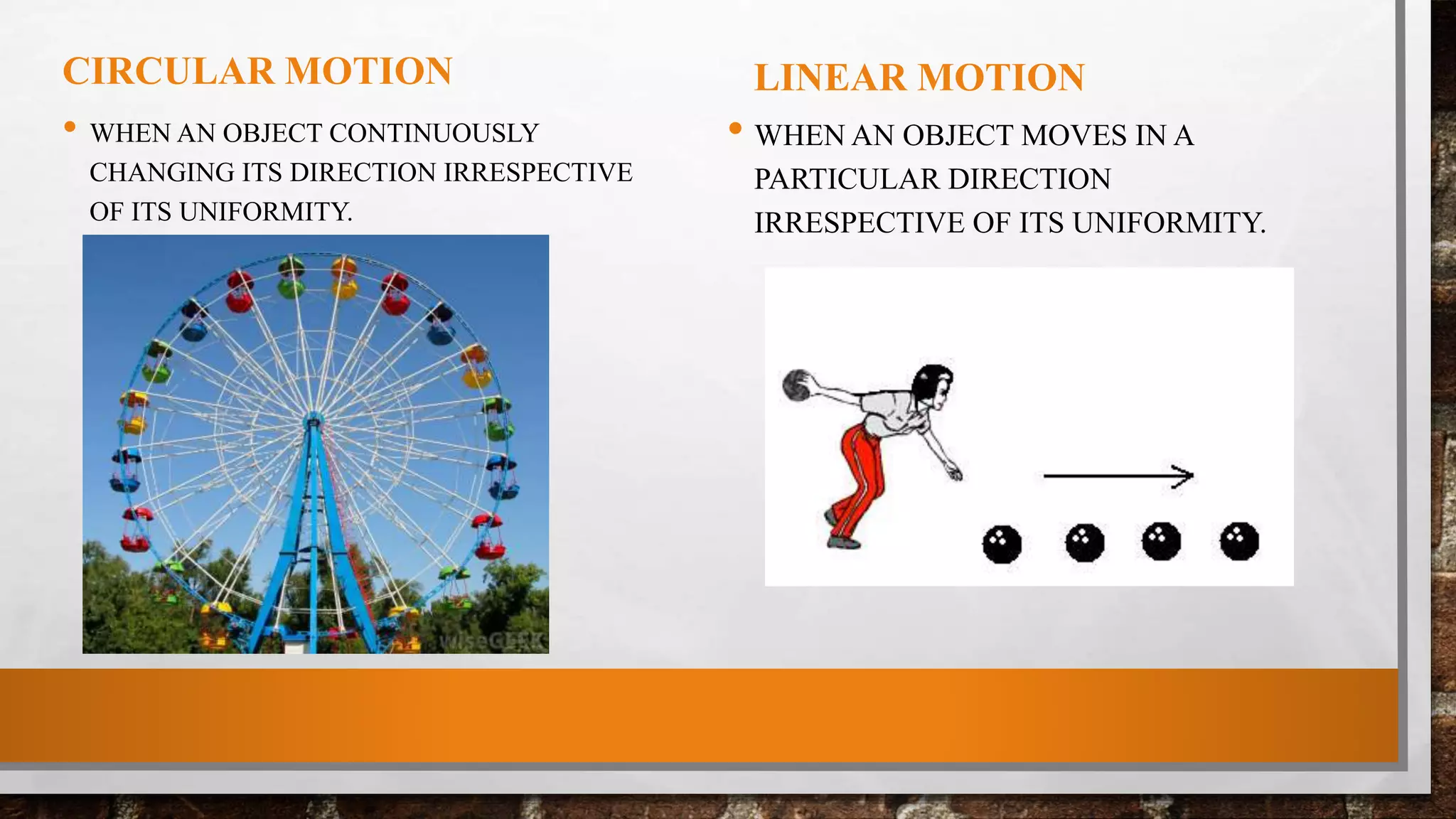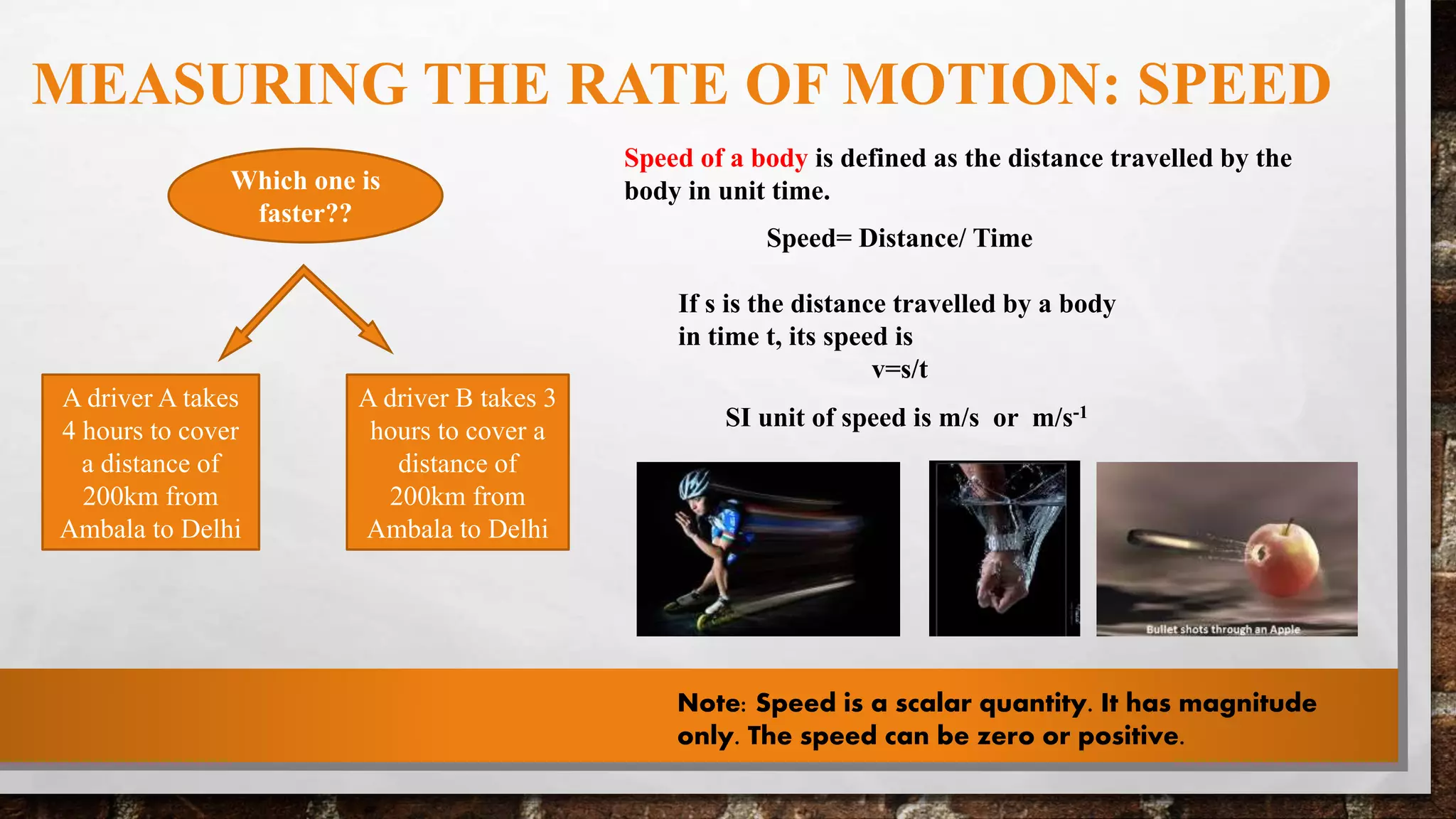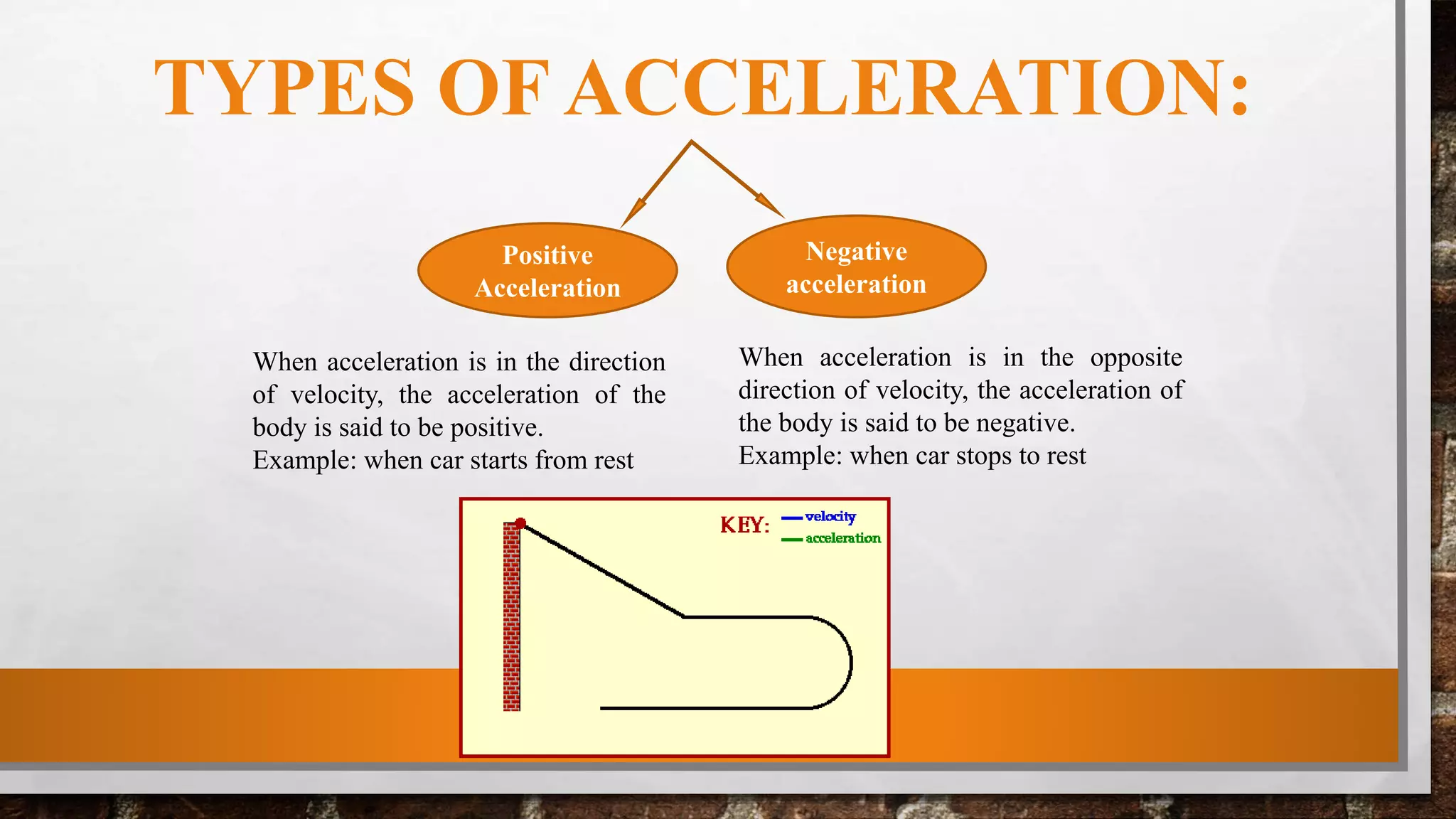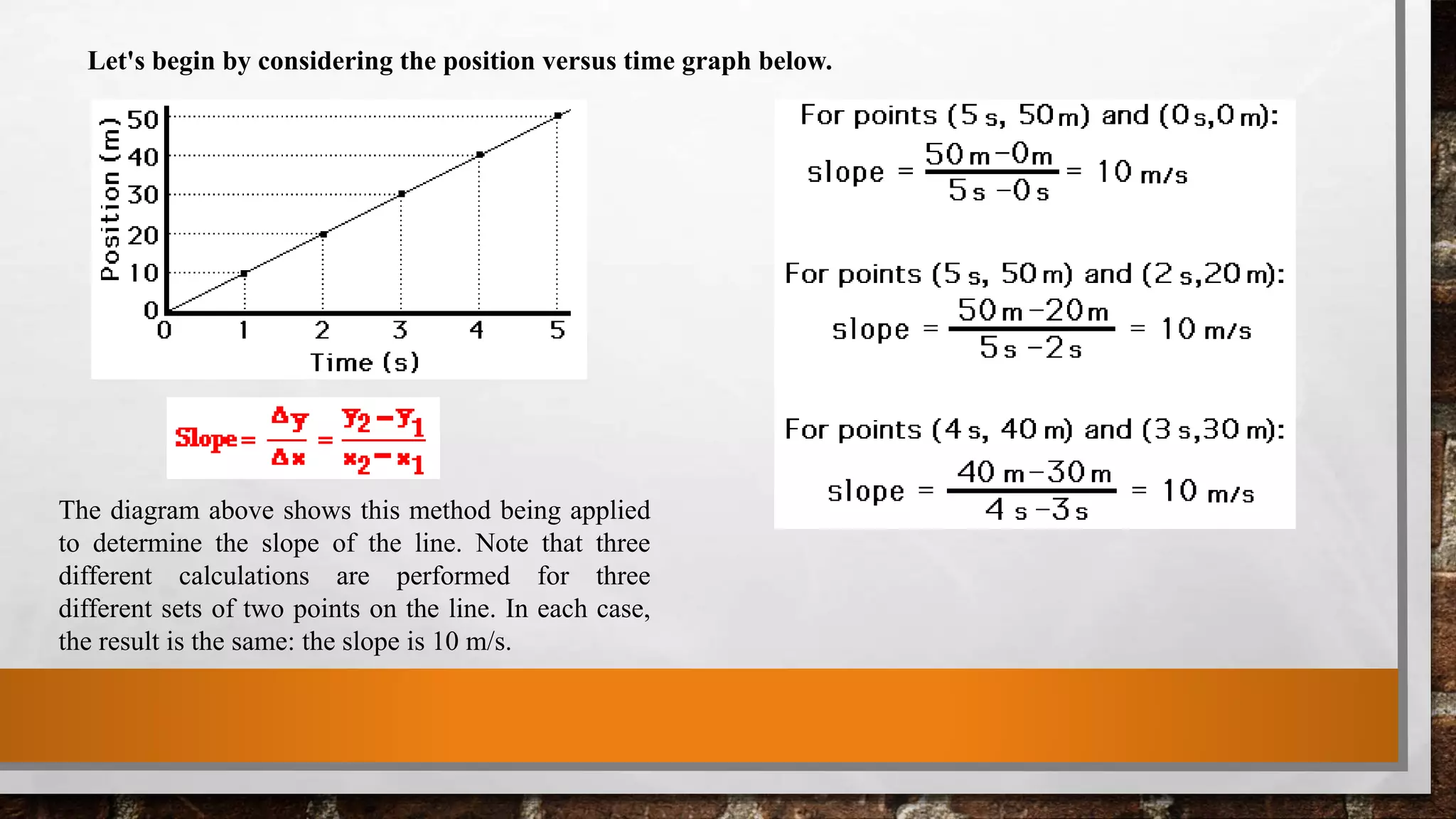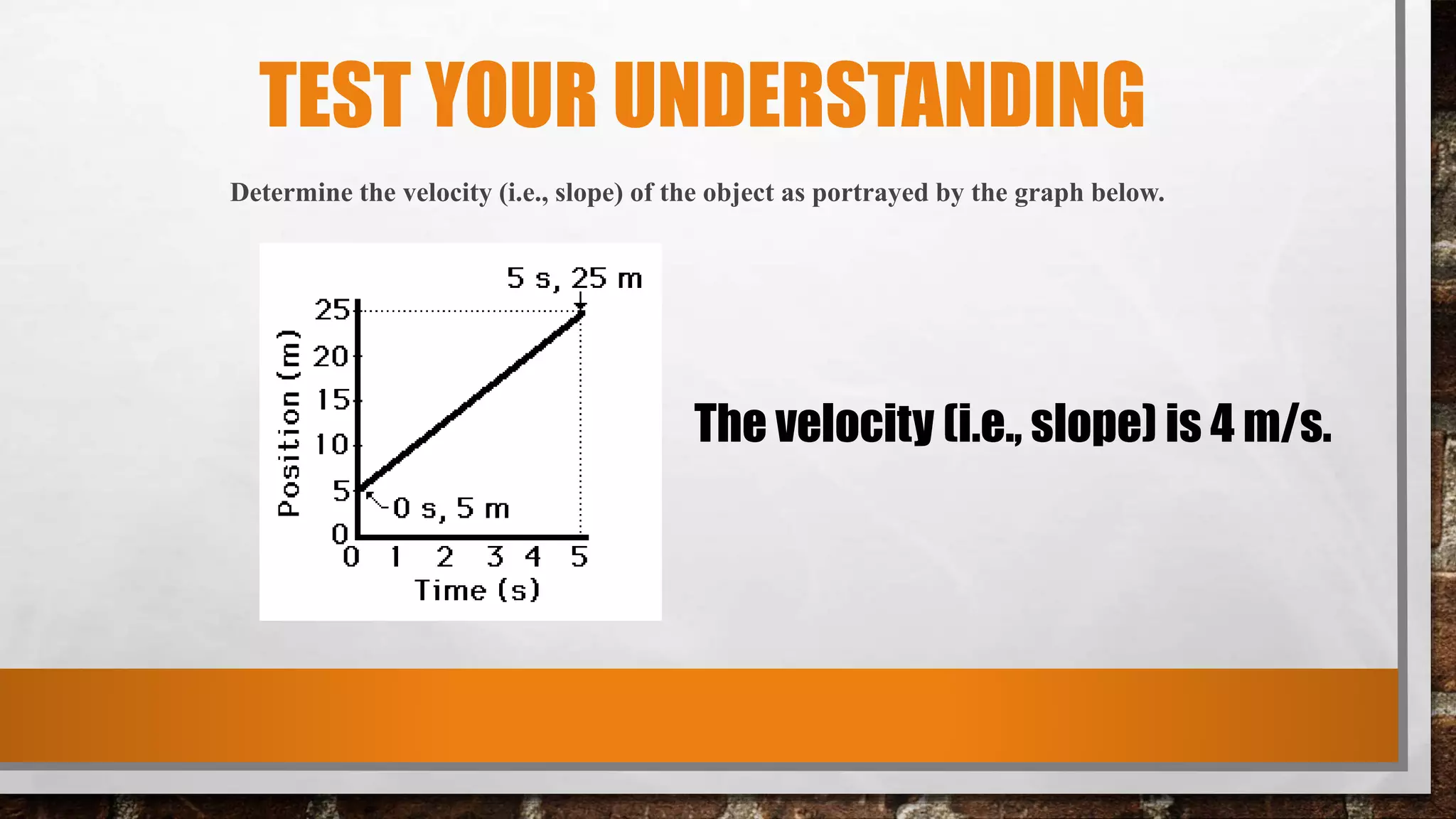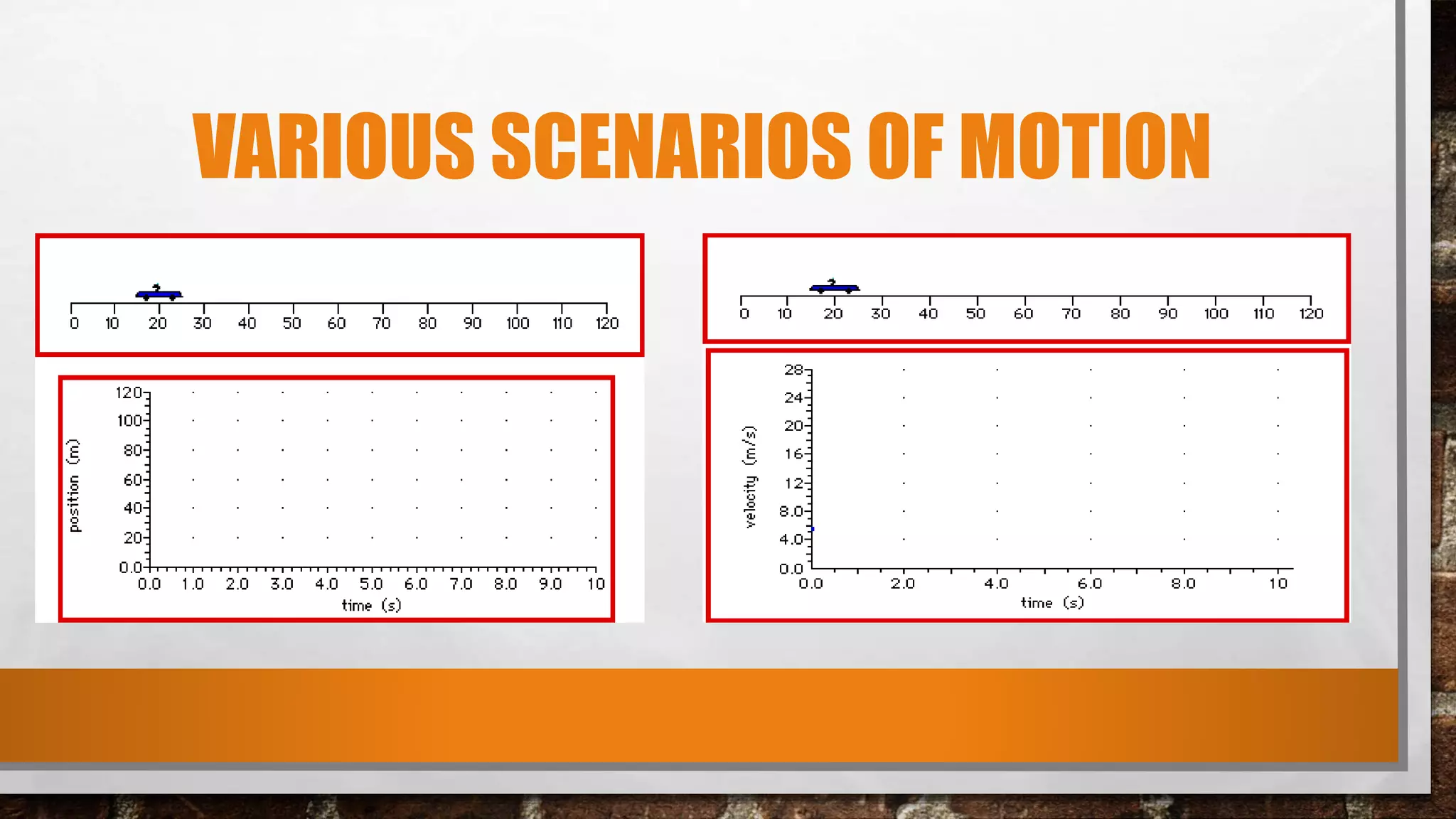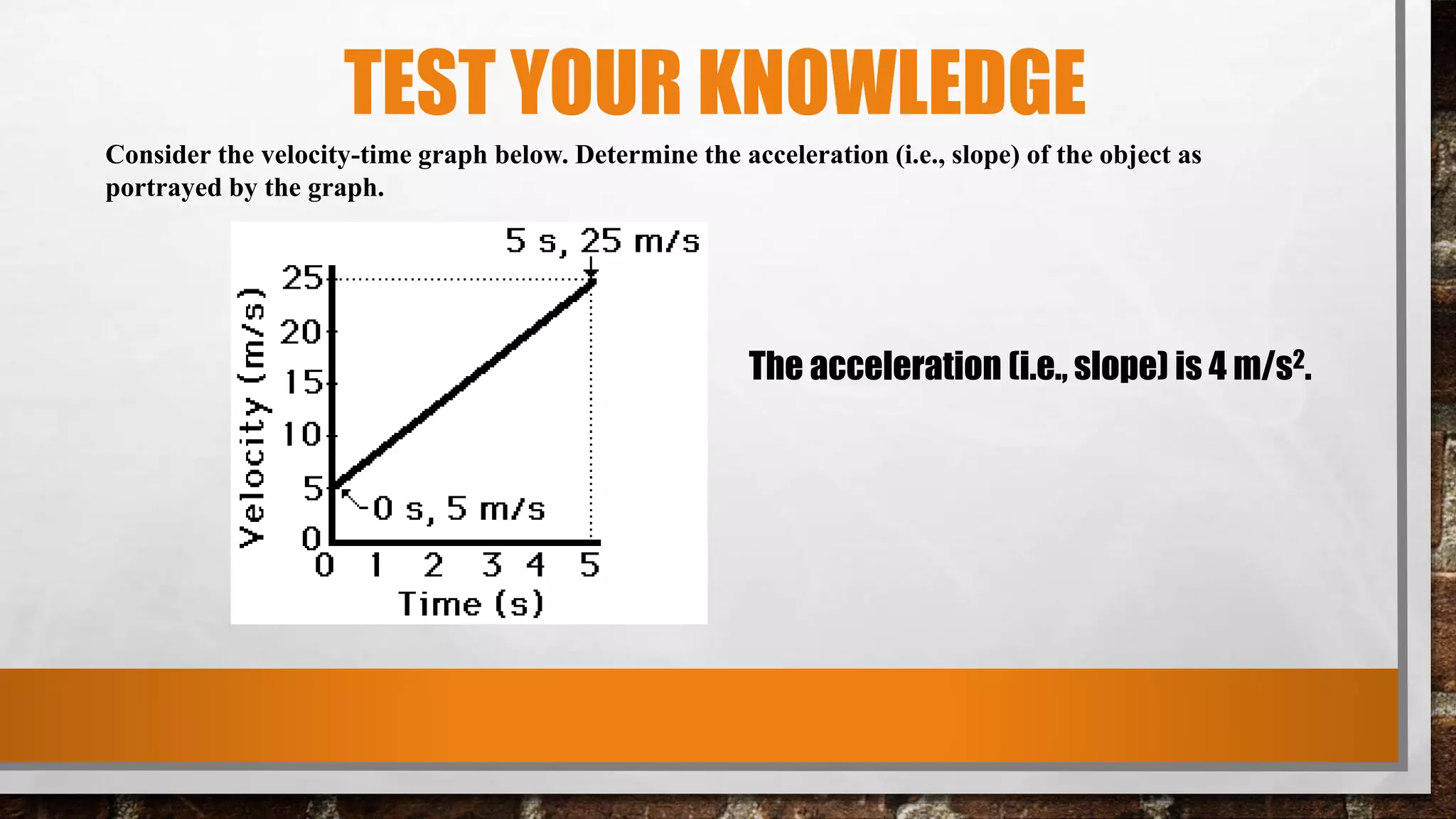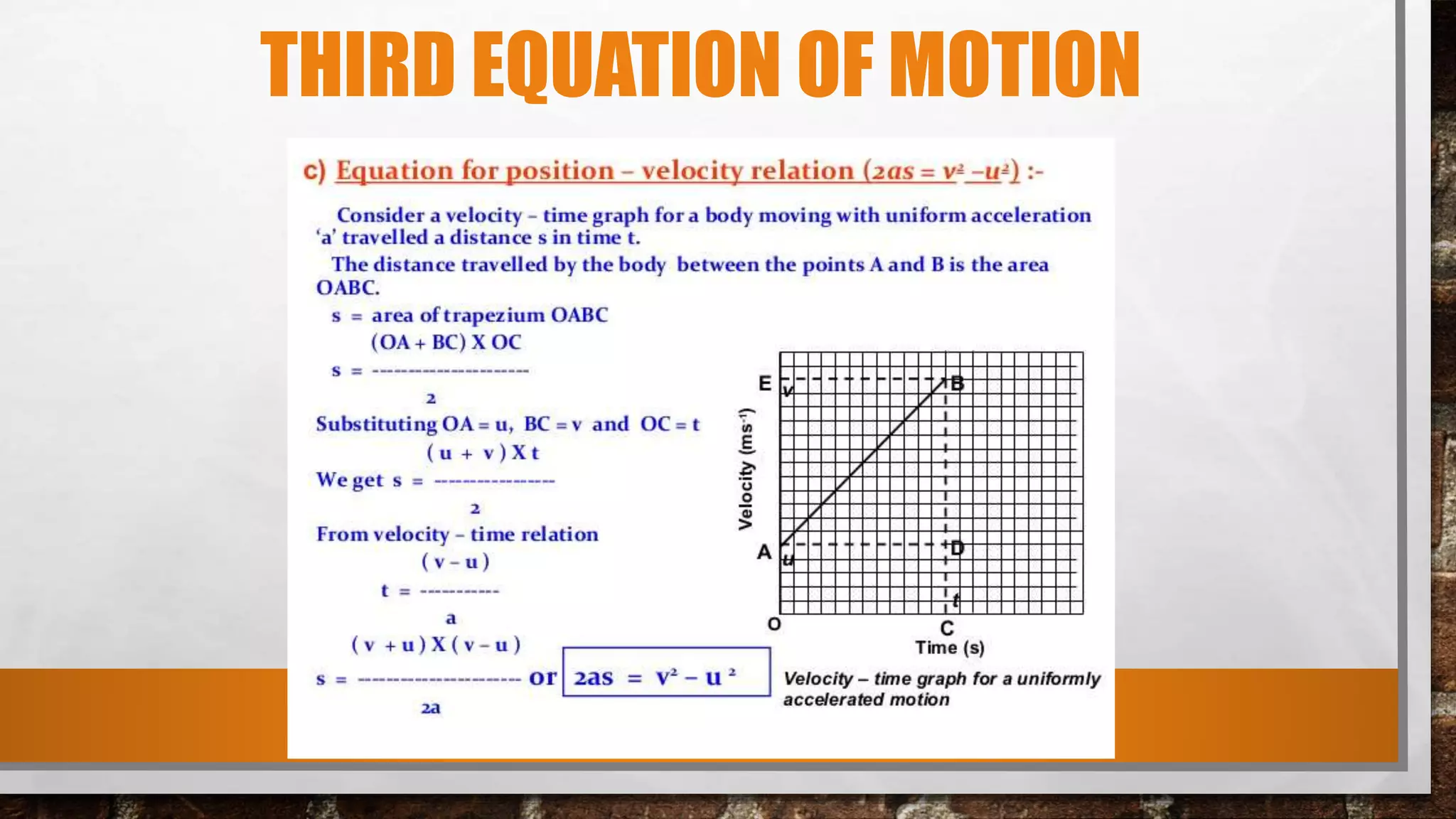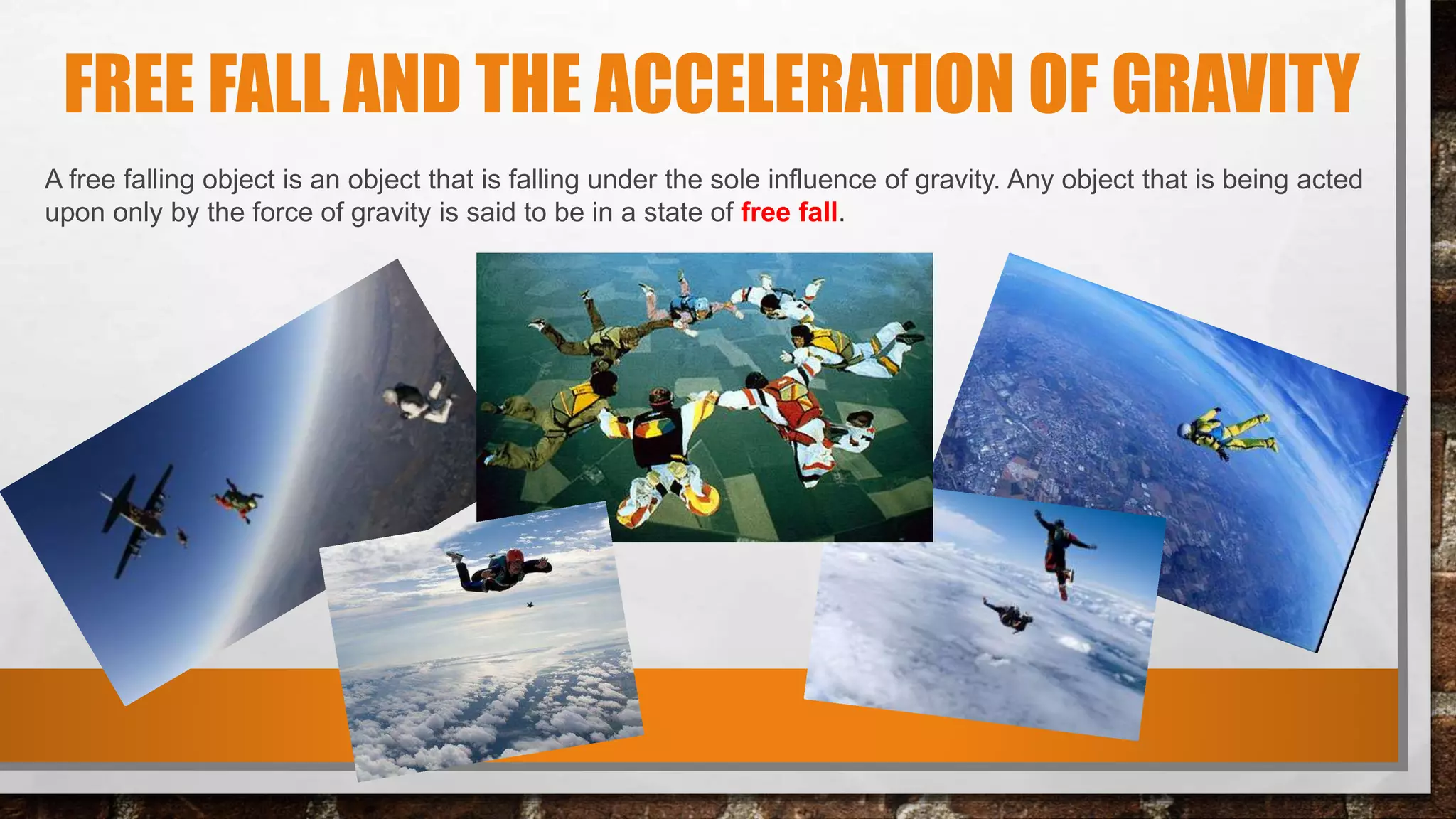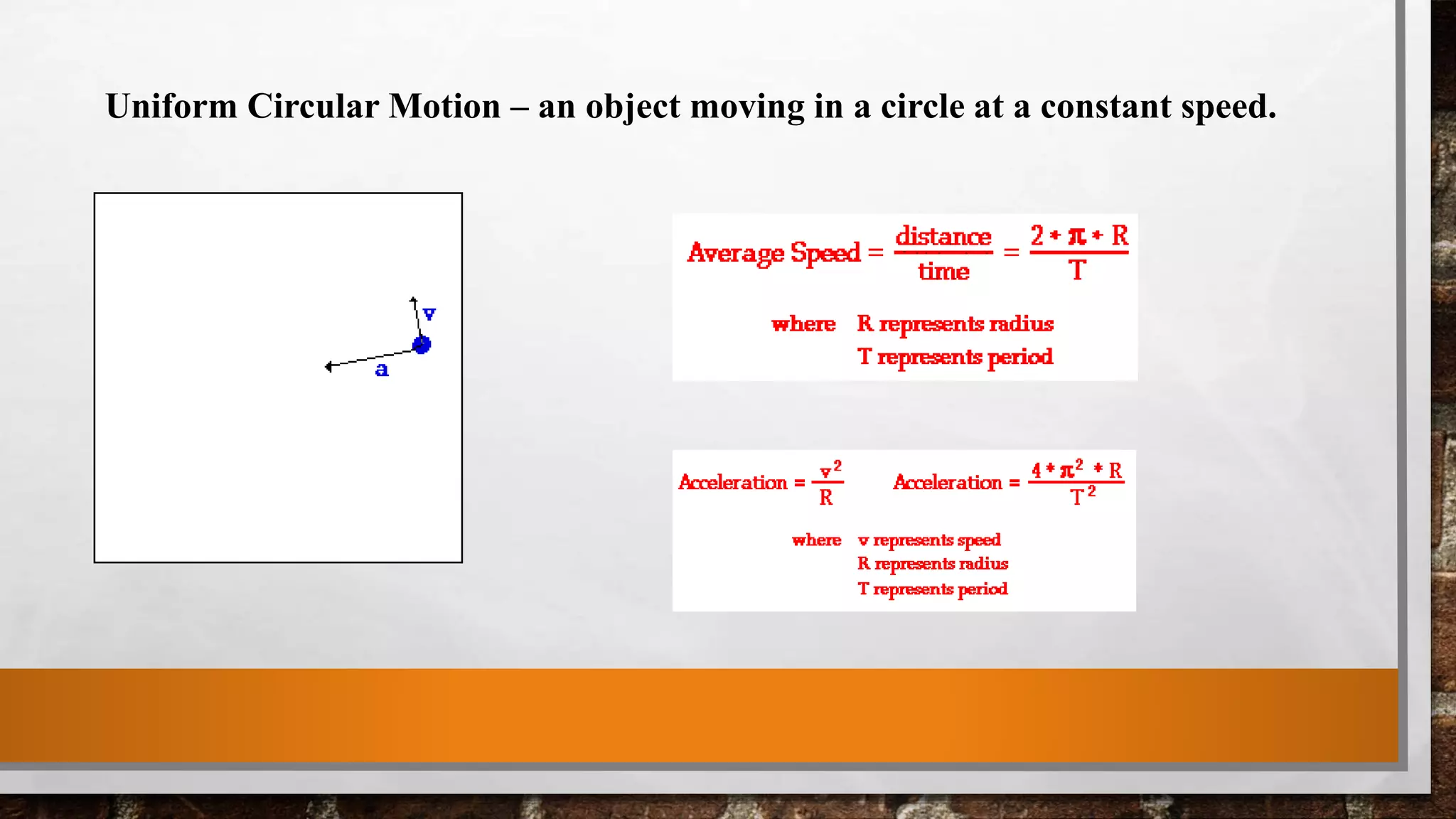This document defines and explains key concepts related to motion including:
- Motion is defined as a change in position or place over time. It can be linear or circular.
- Relative motion occurs between two objects moving in the same or opposite directions.
- Distance is the total path length traveled, while displacement is the shortest distance between the start and end points.
- Speed is how distance changes over time, while velocity includes both speed and direction.
- Acceleration is the rate of change of velocity over time and can be positive, negative, or zero.
- Graphs of position vs time and velocity vs time can be used to analyze an object's motion.



